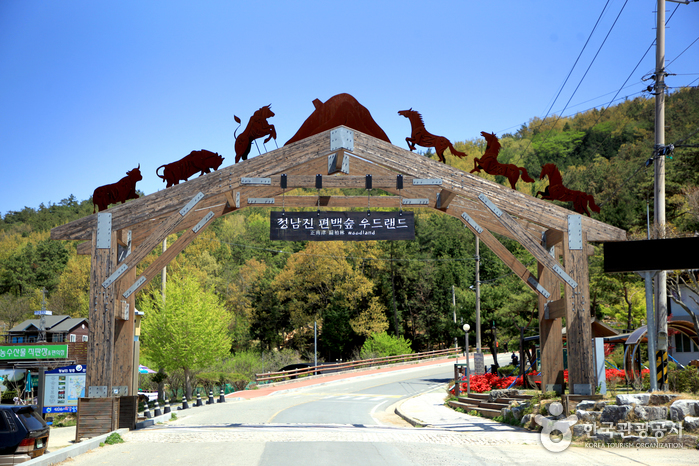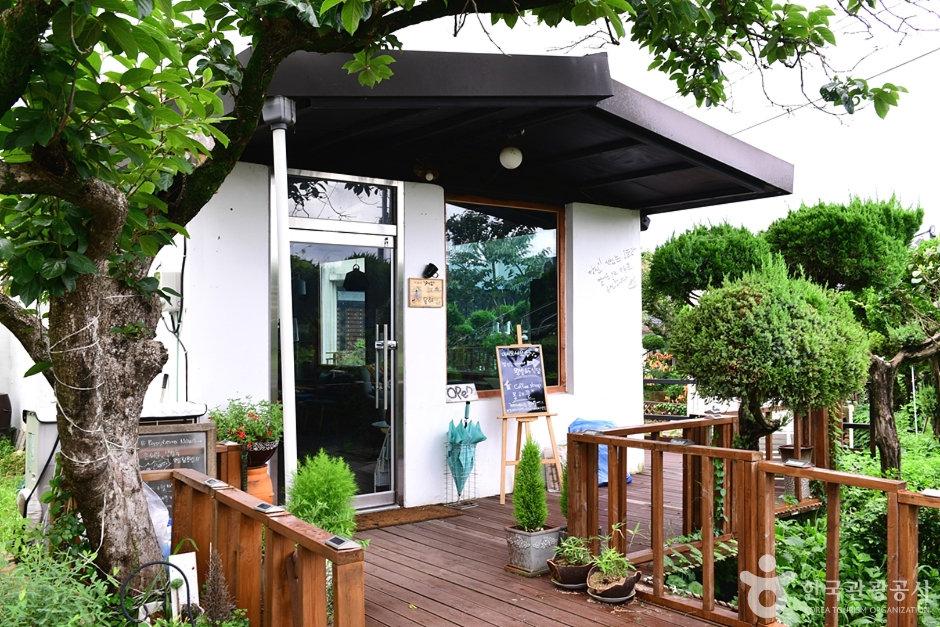Jeongnamjin Cypress Forest Woodland (정남진 편백숲 우드랜드)
19.2Km 2025-10-23
180, Woodland-ro, Jangheung-gun, Jeollanam-do
+82-61-864-7911
Jangheung Jeongnamjin is an ecological village situated next to mountains, the sea, and the river. The Jeongnamjin Cypress Forest Woodland is the best spot in the area to enjoy the refreshing air and a forest full of tall, 40-year-old cypress trees. Sitting at the foot of Eokbulsan Mountain overlooking downtown Jangheung-eup, the Jeongnamjin Cypress Forest Woodland is home to the Wood Culture Experience Hall, beautiful lodging facilities, including hanoks (traditional Korean houses), the Jeonnam Woodcraft Center, the Ecological Building Experience Site, Forest of Therapy, and the Cypress Salt House (traditional Korean sauna).
Yehyang (예향)
19.4Km 2024-02-19
11-1 Boeun-ro 3-gil, Gangjin-eup, Gangjin-gun, Jeollanam-do
061-433-5777
Yehyang is a traditional Korean table d'hote restaurant that originated in 1930 on Yeongrang-ro in Gangjin. They offer set menus such as ye jeongsik, hyang jeongsik, and surasang, all served based on a portion size for four people. Using natural ingredients, they provide healthy and flavorful meals with dishes like hongeo samhap (skate, pork, and kimchi combo), tteokgalbi (grilled galbi patties), and bori gulbi (barley-aged dried yellow croaker).
Haetae Sikdang (해태식당)
19.6Km 2024-02-16
6 Seoseongan-gil, Gangjin-eup, Gangjin-gun, Jeollanam-do
Haetae Sikdang specializes in Namdo-style hanjeongsik (Korean table d'hote), with the Haetae jeongsik (Haetae set menu) being the sole offering on its menu. This nutritious array of dishes is prepared using ingredients sourced from the rich natural environment of Gangjin. The selection of food varies seasonally, featuring Gangjin daehap (hard clams) in spring, minmul jangeo (freshwater eel) in summer, jeoneo (gizzard shad) and odori (raw shrimp) in autumn, and maesaengiguk (seaweed fulvescens soup) in winter, ensuring a diverse and fresh dining experience throughout the year.
Jeollanam-do Heart Health Healing Center (전라남도 마음건강치유센터)
19.6Km 2025-09-16
121, Rohaseu-ro, Anyang-myeon, Jangheung-gun, Jeollanam-do
Jeollanam-do Heart Health Healing Center is a specialized mental health and wellness facility located on the second floor of Wonkwang University Jangheung Integrative Medical Hospital. Established to support individuals experiencing emotional challenges such as depression, anxiety, and stress in the wake of COVID-19, the center offers a variety of experiential healing programs. These include integrative medicine treatments rooted in traditional Korean medicine, forest therapy, and aromatherapy. The wellness programs are offered as one-day, two-day (1 night/2 days), or three-day (2 nights/3 days) courses. Each consists of integrative medical treatments, therapeutic sessions, and Korean medicine education, such as making Gyeongokhwan herbal pills. For the two-day and three-day courses, participants can also enjoy forest therapy program is held at Jeongnamjin Cypress Forest Woodland. Programs accommodate 12-24 people, with up to three groups accepted per day. Sessions are not available on weekends or public holidays.
Jeamsan Recreational Forest (제암산자연휴양림)
19.7Km 2021-07-02
330, Daesan-gil, Boseong-gun, Jeollanam-do
+82-61-852-4434
Jeamsan Mountain is beautiful throughout the year with royal azaleas in spring, cool water in summer, silver grass in fall, and a snow-covered mountain in winter. The mountain attracts over 100,000 visitors during vacation periods with Yongchugyegok Valley nearby. Just over the mountain is the ocean with Yulpo Beach where visitors can enjoy after relaxing at Jeamsan Recreational Forest.
Wangbeot 165 (왕벚165)
19.7Km 2024-02-20
165 Wangin-ro, Seoho-myeon, Yeongam-gun, Jeollanam-do
Wangbeot 165 is a locally recommended Korean restaurant that excels in both taste and atmosphere. Its signature dish is dongchunghacho baeksuk (whole chicken soup with cordyceps), a hearty soup made with chicken, dongchunghacho (cordyceps), abalone, octopus, and various medicinal herbs, boiled to perfection. The ambiance of the hanok adds to the dining experience. Located near the site of the Historic Site of Wang In, where cherry blossoms bloom in spring, diners can enjoy their meal amidst the beauty of the blossoms.



 English
English
 한국어
한국어 日本語
日本語 中文(简体)
中文(简体) Deutsch
Deutsch Français
Français Español
Español Русский
Русский